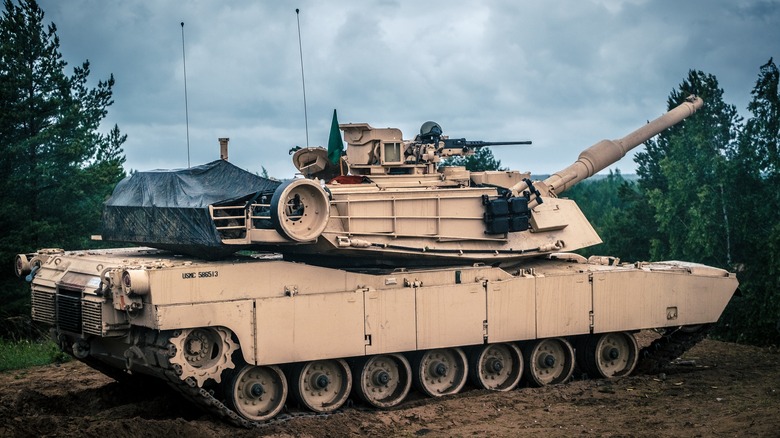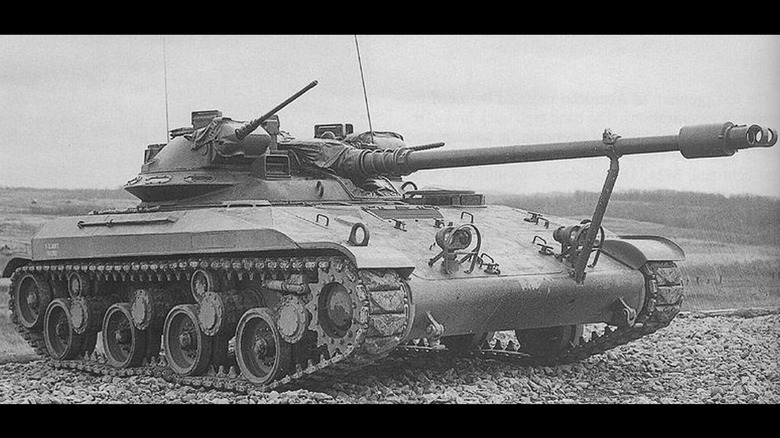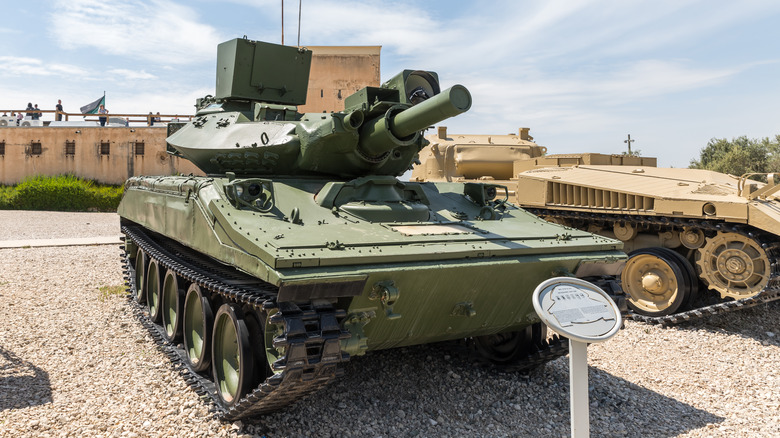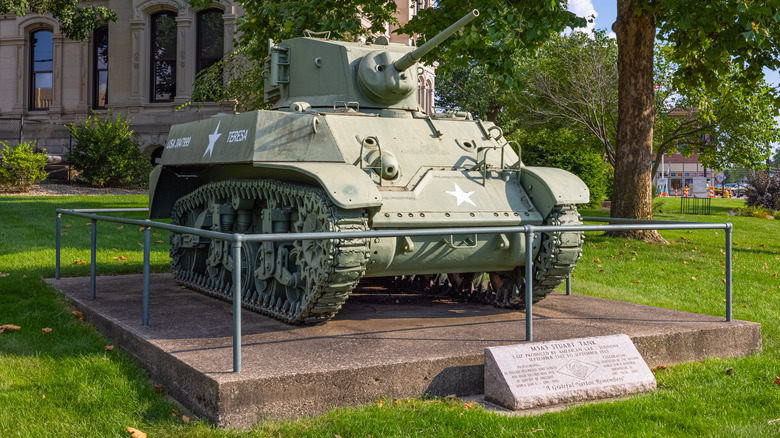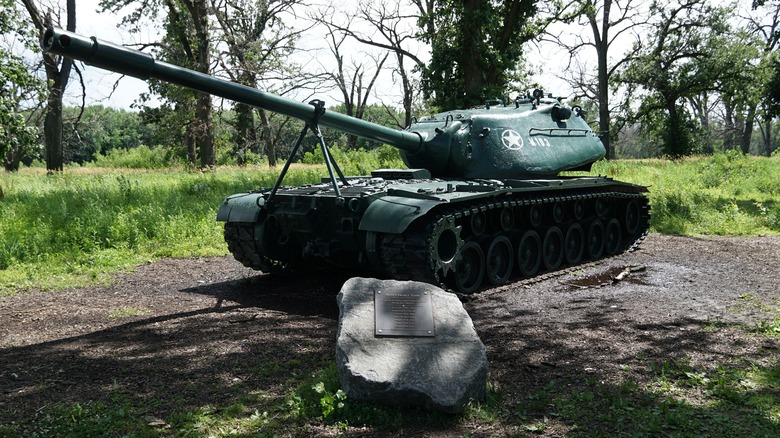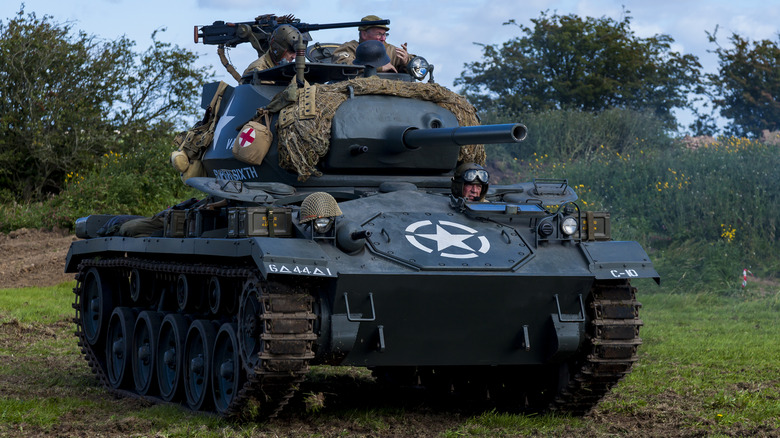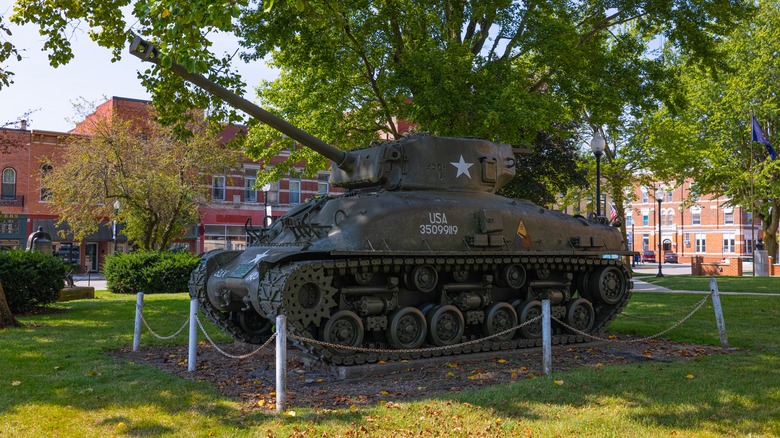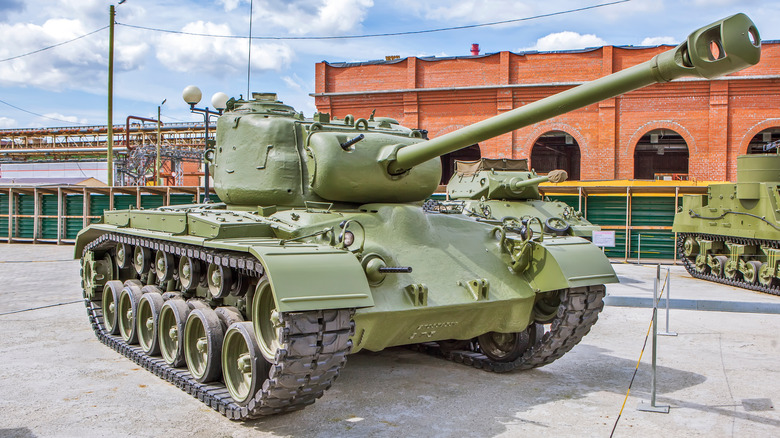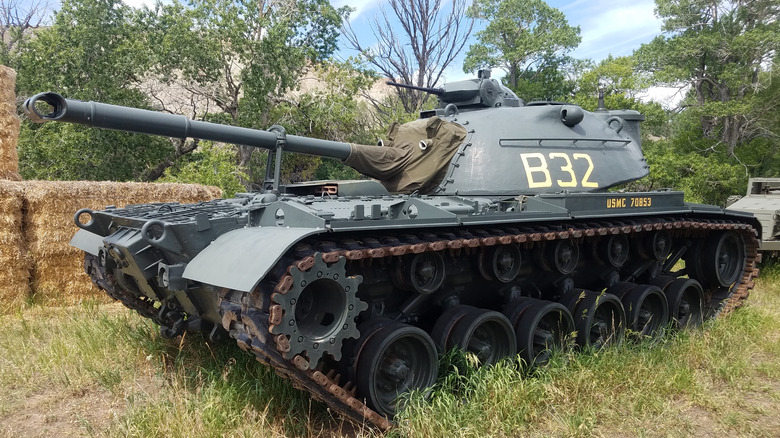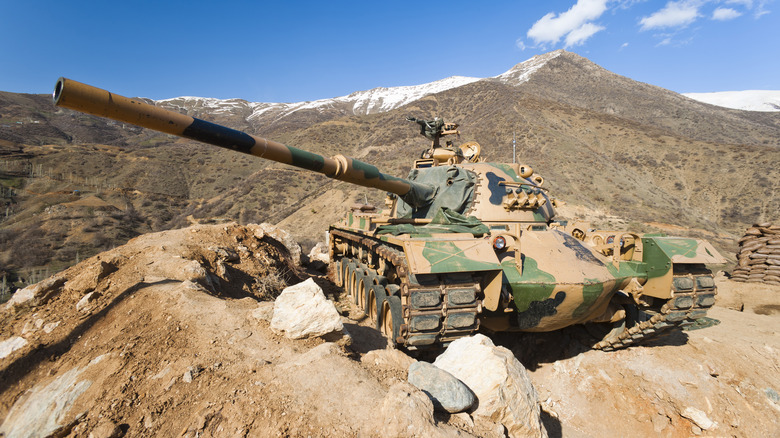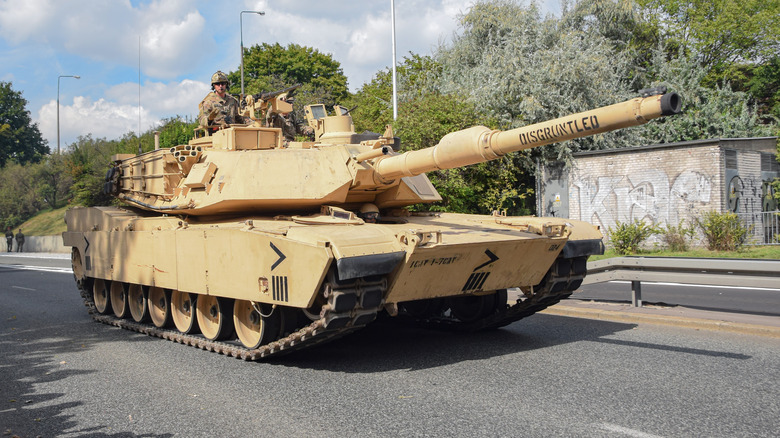The 10 Best American Tanks Ever Built, Ranked
American tanks have been the stalwart guardians of freedom for decades. From the harrowing battlefields of World War II to the intense theatres of modern warfare, these heavily plated behemoths have played a pivotal role in shaping history. In pursuing excellence, the United States has continuously honed its tank technology, creating a fleet of tanks ranging from light scouts to impenetrable fortresses.
Here we will look at the 10 best American tanks ever built, ranking them by their impact around the world and how they've influenced models that came thereafter, as well as their production success. We will also account for their firepower, armor, versatility, and overall reliability through different periods of time, in addition to innovation when compared to their predecessors.
So buckle up as we journey through tank history, celebrating the engineering triumphs that birthed iconic war machines such as the M4 Sherman and the modern-day M1 Abrams – steel titans forever solidified as symbols of American military might.
10. T92
The T92 was an experimental light tank developed by the United States during the 1950s. Although it never saw mass production, it was intended to be an air-transportable tank that could support airborne and airmobile units with light firepower capabilities. The design, research, and experience gained from the T92 went on to shape the blueprints for later lightweight tanks.
The armament of the T92 consisted of a main T185E1 76 mm tank gun, an M2 12.7 mm heavy machine gun, and two M37 7.62 mm machine guns. As a replacement for the heavier M41 Walker Bulldog, the T92 tried to maintain the firepower and protection level of its predecessor while becoming more agile. As such, the T92's hull encompassed a welded assembly of armor steel castings and plates, saving nearly eight tons of weight.
Moreover, the T92's T185E1 tank gun also saw improvement over the M41's. While they were both a T185E1, the T92's variation was semi-automatic. This meant that instead of ramming the round into the breech, the loader could put the round into a cradle that forced it inside. The reduced physical toll on the loader and increase in productivity meant that the T92 could fire up to 12 rounds per minute!
Unfortunately, before the T92 was perfected and ready for mass production, Congress soon got word that the Soviet Union was developing tanks with amphibious capabilities. Since amphibious capabilities would require an entire redesign of the hull, the Army ordered the cancellation of the T92 project in 1958, paving the way for the well-known but controversial M551 Sheridan.
9. M551 Sheridan
The M551 Sheridan was an amphibious light tank that was predominantly used by the United States Army during the Vietnam War. Named after General Philip Sheridan, the M551 was intended to fulfill various military roles including anti-tank operations, reconnaissance, and infantry support. What set the M551 Sheridan apart from other amphibious tanks at the time, though, was its air transportability, which made the M551 an asset in the dense jungles and challenging terrain of South Vietnam.
In terms of firepower, the M551 was equipped with an M81 launcher that could also fire the MGM-51 Shillelagh anti-tank guided missile. The M81 could fire conventional high-explosive rounds or use the MGM-51 to engage enemy tanks at long ranges with precision guidance. The M81 launcher wasn't perfect though. High pressures were generated while firing which led to cracks developing near the breech, eventually leading it to be replaced by the M81E1 variant which had a shallower barrel.
The M511 Sheridan could also operate in aquatic environments and cross water obstacles. Pairing this with its thermal imaging sights, the M511 could operate just about anywhere and at any time. The M551 Sheridan's biggest drawback, however, came with its greatest advantage. Due to its lightweight design, the M551 incorporated aluminum armor, which reduced its overall weight but sacrificed protection. The M551 was vulnerable to enemy fire and was no match against heavily armored tanks. As a result, the M551 Sheridan's role soon shifted from a frontline combat unit to armored cavalry missions until being retired in 2003.
8. M3 Stuart
The M3 Stuart was a light tank that was widely used by the United States and its allies during World War II. Dating back to the 1940s, the U.S. military recognized the need for a quick and agile tank that was capable of scouting and engaging enemy forces, making it adept at hit-and-run tactics and flanking maneuvers. With a top of 36 mph, the M3 Stuart became one of the fastest tanks on the battlefield.
Featuring a riveted hull and a distinctive turret with a prominent cupola, the M3 was made for a crew of four, including a driver, gunner, loader, and commander. It was armed with a 37 mm M5 gun (later replaced by the slightly longer M6) and smaller Browning M1919A4 machine guns. While the 37 mm M5 gun was effective against infantry and lightly armored vehicles, it struggled against heavily armored enemy tanks as the war progressed. However, its role was reconnaissance and not to engage in direct heavy combat.
That's not to say the M3 Stuart was easily penetrable. For its time, the M3 was heavily armored for a light tank. It had 44 mm of armor on the lower front hull, 38 mm of armor on the upper front hull, 51 mm of armor on the gun mantlet, and 25 mm of armor on the hull sides. As such, it's no surprise that the M3 Stuart and its variants are still active in multiple militaries around the world today. Well, that and its relatively low production costs.
7. M103
The M103 was an American heavy tank that was developed during the early 1950s to counter the heavily armored Soviet tanks of the time while also bolstering the United States Army and the United States Marine Corps. The M103 is often referred to as America's last heavy tank and was characterized by its imposing size and formidable weight of 65 tons.
The M103 was equipped with an impressive 120 mm M58 cannon, which was capable of penetrating the thick armor of enemy tanks at great distances. Its own frontal armor which was exceptionally thick, offering enhanced protection against enemy fire. This combination of both firepower and heavy padding gave it a dangerous advantage in head-to-head engagements, making it a force on the battlefield.
As time progressed, however, the M103's greatest attributes — size and weight — became its greatest weaknesses, as the M103 could not keep up with the versatility of modern tank warfare. It could not maneuver around various terrains and struggled particularly with urban areas. Additionally, it was expensive to produce and maintain when compared to newer, lighter tanks.
Having said that, the M103 remains an important part of tank technology and a symbol of the United States' efforts to maintain a strong military presence during the Cold War. After all, the M103 could still make quick work of the next generation of lightweight tanks in a head-to-head scenario. The M103 was eventually phased out in the 1970s, marking the end of American heavy tank development.
6. M24 Chaffee
The M24 Chaffee was developed during the later stages of World War II as a substitute for the M3 Stuart when the United States sought a new light tank dedicated to infantry support roles. Offering better armor, increased firepower, and more mobility, the M24 Chaffee became one of the most impactful tanks of its time, contributing to the success of Allied operations beyond World War II.
As an improvement over the already nimble M3 Stuart, the M24 Chaffee was designed to be as light as possible. It was operated by a five-man crew, with the driver and bow gunner seated in the front hull, and the loader, gunner, and commander seated in the turret. The M24 was kitted with a 75mm M6 canon, two M1919A4 machine guns, and a 12.7mm M2HB heavy machine gun. The M24 could therefore engage combat vehicles, aircraft, and ground targets.
With its lightweight build, the M24 could reach a maximum speed of 34 mph, but this of course came at a cost. You see, while the 25 mm of steel armor at the hull front, 19mm at the sides and rear, and 38 mm on the turret could protect the crew from small arms fire, it faired poorly against heavier munitions — almost all cannon or anti-tank weapons could penetrate its armor when engaged in head-to-head combat. However, the M24's anti-tank vulnerability did not stop its service. Like many post-war vehicles, the M24 was later gifted to other allied nations around the world, eventually being deployed in the Indo-China war, Korean War, and the Indo-Pakistani war.
5. M4 Sherman
The M4 Sherman was one of the most iconic medium tanks the United States developed in the World War II era. One of its greatest strengths was prioritizing ease of manufacturing, which made the M4 Sherman quicker and cheaper to build compared to other medium tanks. Thousands were distributed amongst the Western Allies, and quantity also meant quality in this case, the M4 Sherman soon gained a reputation for being a versatile and reliable workhorse that could operate in various roles on the battlefield.
As a mass-produced medium tank, the M4 Sherman came in different variants, each trying to improve upon the previous iteration. Earlier models typically had thin armor, whereas later versions tried adding appliqué armor panels to the sides of the turret and hull. While these modifications improved the M4 Sherman's chances of survival against small-arms fire and some anti-tank rounds, it was still considered weaker when compared to the German Panther and Tiger tanks.
The M4 Sherman was initially armed with a 75mm M3 main gun, which was effective against light to medium tanks. Similar to the M24 Chaffee, the M4 Sherman also had a Browning M2HB heavy machine gun, as well as a set of smaller Browning M1919A4 machine guns. These weapons could provide infantry support, anti-aircraft defense, and were capable of engaging armored vehicles. To counter those German Panther and Tiger tanks later versions of the M4 Sherman introduced the more powerful 76mm main gun, an armor-piercing weapon that could take on the heavier German giants.
4. M26 Pershing
The M26 Pershing was a "heavy" medium tank that was designed to address the shortcomings of its predecessor, the M4 Sherman. Weighing over 40 tons, the Pershing featured a powerful 90 mm M3 gun, making it a potent adversary on the battlefield. The M26 Pershing also had thick frontal armor, which was a significant improvement over the M4 Sherman. The added firepower and padding consequently allowed the M26 to engage and defeat heavily armored tanks.
There is some debate about whether the M26 Pershing was a "heavy tank" at all. By our modern standards, it would very much be a medium tank when compared to the larger tanks of today. However, when comparing the M26 Pershing to the German Tiger 1 (an iconic heavy tank), they both had similar firepower with the Pershing possibly having superior frontal armor. The main difference, however, was that Tiger 1 was approximately 10 tonnes heavier. However, the M26 Pershing's weight classification was irrelevant as its objective remained the same – combat heavy enemy tank units.
That said, the M26 Pershing saw only limited combat in the closing stages of World War II. Since it was only pushed into service in the mid-1940s, it wouldn't see significant use until the Korean War. The M26 Pershing finally proved effective when it went up against North Korean operated T-34s. Despite that, the M26 Pershing lifespan was not long for this world, and it was eventually withdrawn in 1951 in favor of new tank designs such as the M48 Patton.
3. M48 Patton
The M48 Patton is an American present-day first-generation main battle tank that was designed to replace the M26 Pershing, M46 Sherman, M46 Patton, and M47 Patton tanks. While it may have looked familiar to the M46 Patton and M47 Patton, the M48 was an entirely different tank featuring a new hull, turret, and improved suspension. The M48 Patton was the first medium gun tank that featured a centerline driver's compartment, which eliminated the hull machine gunner position.
Originally, the M48 Patton's main armament was a 90mm gun, but later versions upgraded to the Royal Ordnance L7 105mm – but the biggest change was yet to come. During the early days of the M47 to M48 transition, it was thought that a gasoline-powered engine would be more powerful. However, gasoline was found to be much more vulnerable to fires and explosions. M48-A3 units, therefore, switched to diesel, making them safer and more efficient.
The M48 served as the main battle tank for the United States Army during the Vietnam War with nearly 12,000 units built from 1952 to 1961. Multiple variants were created during this time, going so far as the M48 Zippo, which included a flamethrower and a mock barrel and deflector. While the M48 is still used by certain countries such as Turkey, Taiwan, and Greece today, it was eventually phased out of the United States service in the 1980s. Its effective armored platform and intimidating 105mm M6 gave way to more advanced tanks like the M60 and, eventually, the M1 Abrams.
2. M60
The M60 is an American battle tank developed in the early 1960s as a replacement for the M48 Patton. It featured superior firepower, improved mobility, enhanced armor, and incorporated lessons learned from previous conflicts, making it a formidable force on the battlefield. With 15,000 units produced during the Cold War era, the M60 became one of the most successful tanks of all time.
As a veteran of everything from the Vietnam War to the Gulf War, the M60 has kept up with modern warfare for over four decades. Its heavily armored hull and turret design is composed of rolled homogeneous steel plates, with the frontal armor reinforced with explosive reactive armor blocks that neutralize incoming rounds. The M60 is also powered by a 750-horsepower diesel engine that can get up to 300 miles on a full tank of fuel and a hydraulic suspension system that allows it to adjust its height for improved mobility through rough terrains.
The original M60s had a 105mm M68 cannon capable of firing explosive, armor-piercing, and smoke rounds. The canon was also stabilized, meaning it could shoot accurately even while the tank moved, with a manual override option for precision targeting. Later variants of the M60 featured a 152mm missile launcher while retaining the secondary coaxial 7.62 mm machine gun and roof-mounted M85 .50 caliber machine gun remained the same.
Although the M60 continues to be used today, its armor protection showed vulnerability to anti-tank weapons during the Gulf War. The M1 Abrams has subsequently replaced it as the main battle tank of the United States.
1. M1 Abrams
The M1 Abrams is a third-generation main battle tank that was created for modern armored ground warfare. Known for its superior protection, the M1 has thick armor that can withstand enemy fire and explosive rounds, as well as chemical, biological, and nuclear conditions. The M1 Abrams protection also goes beyond the armor as the fuel and ammunition reside in separate compartments, giving the crew a greater chance of survival in the event of internal explosions.
Although the M1 Abrams was developed in the 1980s to replace the M60, it didn't debut until the first Gulf War of 1991. Since then over 10,000 M1 Abrams have been produced, with multiple base variants including the M1A1, M1A2, and M1A3. Each variant has come with additional upgrades to the firepower and advanced targeting system. Early versions shared the M60's 105 M68 cannon, but the later variants came with the 120 mm M256. The M256 uses an onboard digital fire control computer that allows the gunner to simply point and shoot, allowing the M1 Abrams to remain accurate at range, at night, or in unfavorable weather conditions.
Aside from its exceptional combat performance, the M1 Abrams is also reliable. The 1,500-horsepower turbine engine has a top speed of 45 mph and can propel itself through almost any terrain, including heavy snow or mud. The engine requires little maintenance and allows for a wide range of fuels. It's no surprise that the M1 Abrams continues to be operational in the US military today, although the M1A3 variant is said to be the last of its line.
